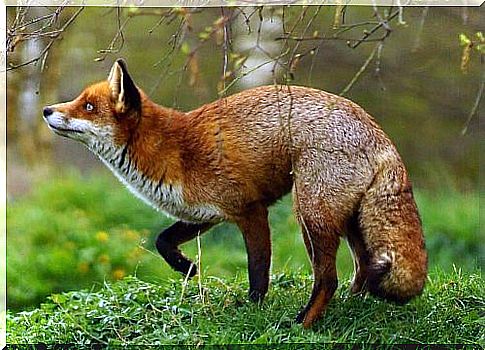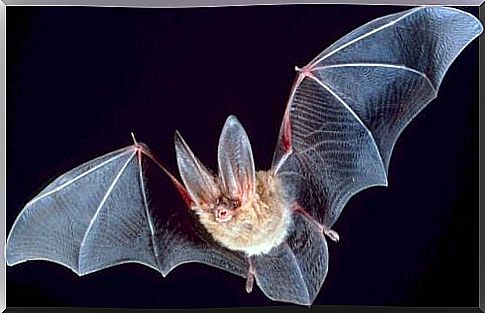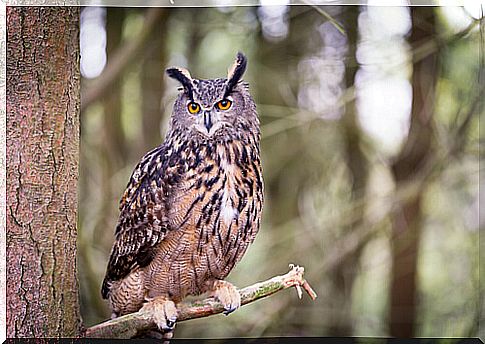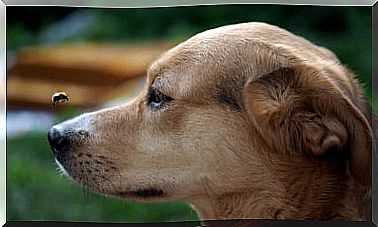Nocturnal Animals

Some beings spend most of the day sleeping, and, when the sun goes down, they go out to provide food or mate. In the following article we will tell you all about the habits of nocturnal animals. We will also discover some of the species that make up this fascinating group.
Characteristics of nocturnal animals
Unlike diurnal animals, nocturnal animals are most active between dusk and dawn. They stay awake in the dark hours, and they sleep when there is sunlight. This behavior has one or more explanations, since, as they say, “nature is wise.”
Their instincts are strongest at night, so they take advantage of the resources available when the sun goes down. They have adapted to prey or reproduce when it is dark.
At other times, they use the hours after sunset to reduce the risk of being hunted by predators. Nocturnal animals have highly developed senses, which is why they make the most of low-light environments. For example, they have special cells in the eyes (if you have a cat, you will know what we are talking about) to be able to capture the brightness of the environment.

On the other hand, nocturnal animals take advantage of the stillness of the environment to perceive smells and find food. Their hearing ability makes their job of finding prey easier. But, they also have their bodies adapted to generate less noise, as is the case with the wings of the owl or the legs of the felines.
As if all this were not enough, they have the ability to camouflage themselves, they must not compete excessively to find food, and they are not forced to work so hard to avoid being seen or hunted by predators (including humans).
Examples
We have already talked about the main characteristics of these wonderful beings that live at night. Now, it’s time to see some examples:
1. Clouded Panther
It is a feline that lives in the forests and jungles of Asia and Africa, and its name is due to the fact that it has spots on the mantle. These allow it to camouflage itself among the trees, where it lives (it almost never descends to the ground). It hunts at night and its favorite prey are birds, rodents and small primates. His ability is such that he can jump from branch to branch without being noticed.
2. Firefly
It could be said that this nocturnal animal is an exception in terms of going unnoticed. When it gets dark, the females fly emitting a light located on the back of the body to be able to mate. Males are not bioluminous, nor can they fly. The firefly is native to America and Asia, it lives near swamps, jungles and wet mangroves.
3. Red fox
It is the most widespread species of fox in the world. The coloring of its coat allows it to adapt to its environment: mountainous and grassy areas. Because of hunting and man’s habits, the red fox has had to change its behavior and adapt to nightlife. During the day, it sleeps and hides in burrows or caves. At night, it goes out to find food (small animals).
4. Owl
It is one of the nocturnal animals par excellence. It nests in wooded areas, and near towns and cities. During the day, it sleeps in caves to protect itself from the light. It is a bird of prey that feeds on small mammals, reptiles, fish or insects. His great ability to camouflage himself in the trees is not the only thing that stands out: he also has good hearing and perfect eyesight.

5. Boa de Tumbes
There is something more scary than going for a walk and finding a snake… Yes! Let it be at night and you bump into a Tumbes boa. This constrictor who lives in the jungle of Ecuador and Peru, has a muscular body, and climbs trees where she sleeps during the day.
Although it can be considered as a nocturnal animal, it also has diurnal habits, since it is cold-blooded. You need to take “sun baths” for your organs to work. It sneaks up on victims, and quickly coils itself around their bodies, suffocating them.
6. Bat
We associate it with nightlife because during the day he sleeps upside down in a cave or tree trunk. His sensitive eyes do not allow him to see when it is sunny. This small mammal eats fruits, insects, or small rodents. It orients itself in the dark thanks to its screech.
Image source: Peter Trimming and PD-USGov.









